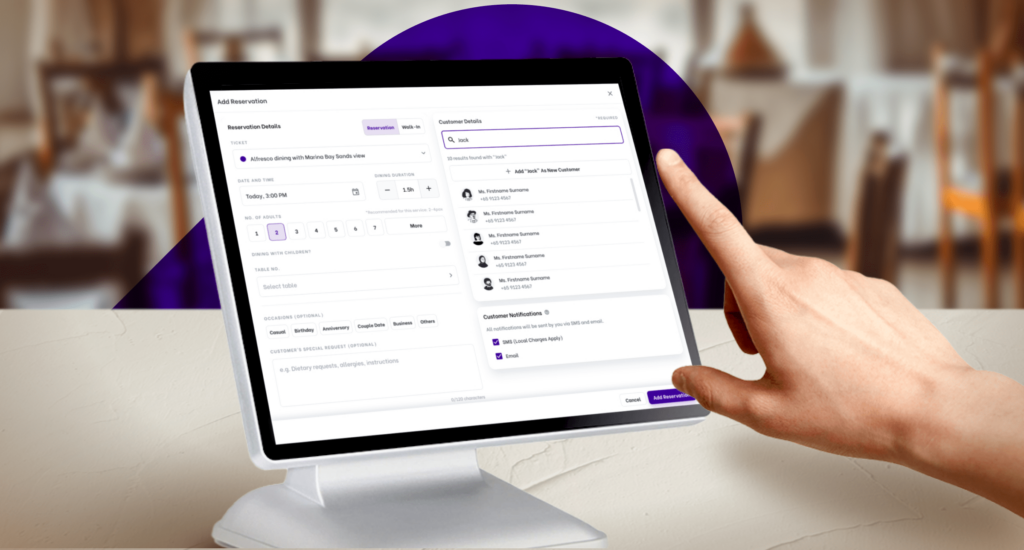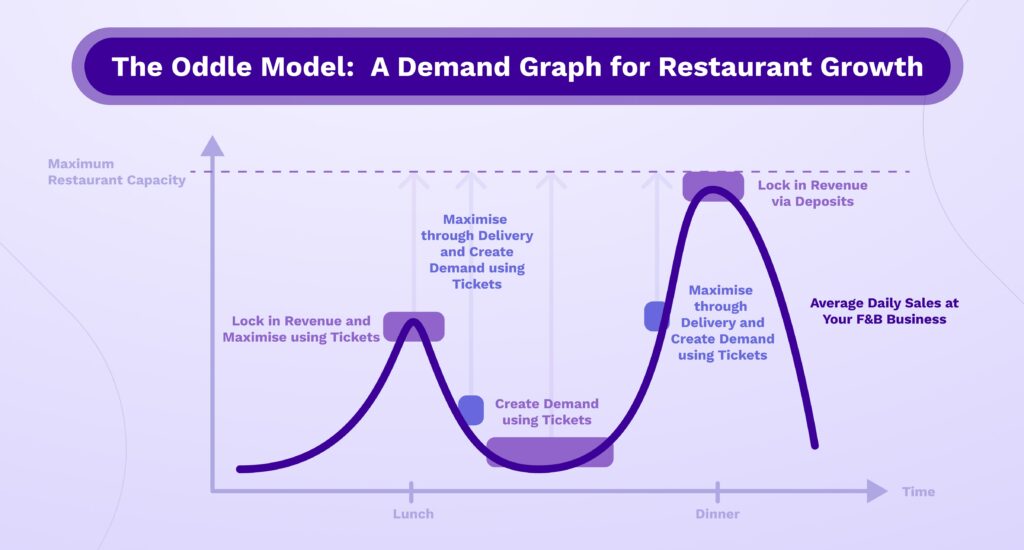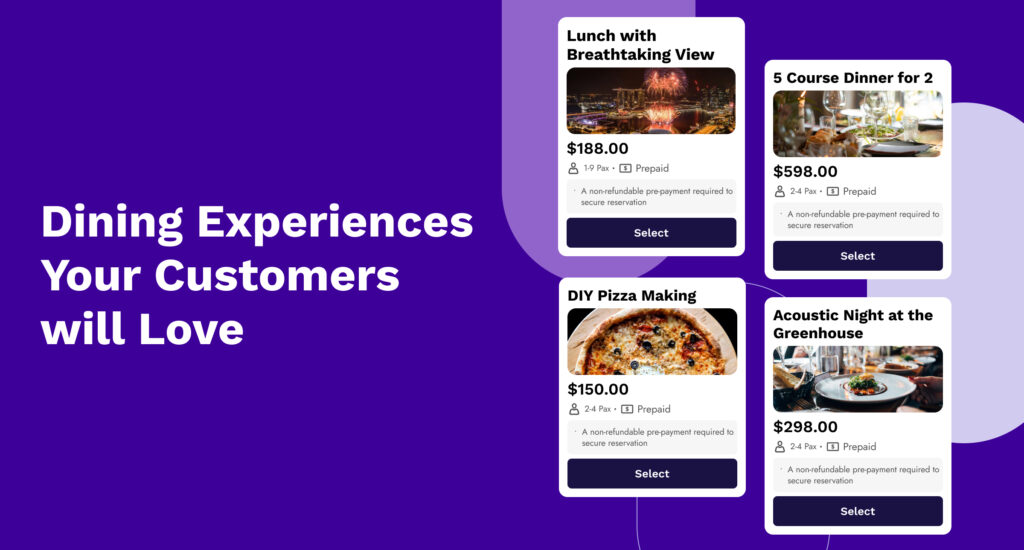Oddle Reserve: Rewriting the Restaurant Reservations Playbook
Drive demand & revenue with dining experiences your customers will love
The restaurant reservations landscape is shifting, but not in the way you might expect.
When dining restrictions were eased back in June 2021, restaurants experienced a spike in bookings. Reservation platforms became a necessity for most F&B businesses as they struggled to cope with overwhelming demand.
The rise in bookings was a boon for reservation platforms, many of which embarked on expansion plans. Given the rapid digitalisation during the pandemic, it was expected that reservation platforms would experience an uptick in usage, particularly as more F&B businesses became aware of its benefits.
But these predictions would prove over-optimistic.
As Singapore moved ever closer to pre-pandemic levels of freedom, the demand for dine out began to wane, leading to a drop in reservations. This was problematic on two fronts:
- Most reservation platforms rely on usage, levying subscription fees and/or per cover charges for every reservation made. Less usage = less revenue.
- Their value proposition lies in driving operational efficiency, which weakens when traffic wanes and front-of-house teams are easily able to cope with dining capacity.
Essentially, these companies are over-reliant on market demand, which is often unpredictable. When demand falls, so too does the need for reservation platforms.
The future of restaurant reservations
Here at Oddle, we play by our own rules. From the very start, our zero-cost reservations platform has allowed us to be independent from the volatile cycles of top-down demand. Instead, we focus our efforts on building features that counter no-show rates, encourage higher table spend, and increase traffic, effectively leading demand from the bottom-up.
It might sound ambitious, but here’s how we do it.
The above model displays a typical demand graph for a casual dining restaurant that operates daily. Peak periods are at lunch and dinner, with low footfall in between.
Your brand’s demand graph might look different depending on the type of F&B business you run. Cafés, for example, often experience higher traffic (and sales) only after lunch.
To plot this demand graph, our data team utilised figures pulled from a restaurant’s Payment Terminals. For Oddle merchants, this is data they fully own and can easily access.
Through the demand graph, several insights can be gleaned.
- During high traffic periods, it becomes more important to:
- Reduce reservation no-shows to prevent loss of sales
- Increase average table spend to maximise revenue potential
- During low traffic periods, it becomes more important to:
- Increase footfall
- Seek additional sales channels (like delivery) that might boost revenue
Oddle Reserve helps F&B businesses target most of these issues through a robust feature named ‘Tickets’. Tickets is a visually-engaging extension of reservations that effectively showcases a brand’s unique offerings. An embedded button on the info card (shown below) also encourages immediate conversion.
With Tickets, F&B businesses can:
- Collect deposits & pre-payments
- Sell dining experiences (e.g. omakase dinners, wine pairing dinners)
- Sell F&B events (e.g. DIY pizza making parties, food tours)
- Sell your restaurant’s real estate (e.g. al fresco dining with a view, rooftop private dining)
- Provide details and images to market your experiences
Fundamentally, the power of Tickets lies in creating experiences your diners will love. Such experiences work to lead demand by attracting and engaging your audience, giving them a sense that they are part of a unique or exclusive event.
This perception of value not only contributes to a positive impression of your brand, it also encourages diners to honour their reservations so that they don’t miss out on the experience.
Unlock your demand potential with Tickets
There are numerous possibilities to explore with Tickets, and you can make multiple use of it to meet your restaurant’s demand needs.
In the case of the restaurant whose graph is shown above, lunch-time tickets can be created to increase potential demand, given that the restaurant is busy, but not yet near maximum capacity. On weekdays, tickets can be sold for a 3-Course Business Lunch, while on weekends, a Bottomless Brunch experience is generally popular with the crowds.
To encourage increased footfall during low traffic periods, discounted set meals or Afternoon Tea sets could be offered. And since dinner is their highest peak, the restaurant might want to reduce no-show rates by charging a deposit (with a 3.4% payment gateway fee per transaction). Oddle Reserve’s variable deposit model allows restaurants to set their own rates, so deposit amounts can be lower on weekdays and slightly higher on weekends. This prevents the risk of customers being turned off by high deposit charges.
Start selling better
Fully integrated with Oddle Reserve, Tickets is a tool you can sell and market on your existing organic channels at zero-cost. Our dedicated account managers regularly keep in touch with restaurant partners, helping them plot out their own demand graphs and recommending optimisation tips based on their expertise.
As part of Oddle’s mission to always put restaurants first, we believe in equipping restaurants with the most cost-efficient and valuable tools for them to thrive, even in times of change. With Oddle Reserve and Tickets, we’re working towards a future where reservations become more than just an operational tool, and instead will emerge as a vital part of your primary sales strategy.
We regularly publish how-to guides and insights into the food delivery industry in Singapore. Read more about the 6 Must-Have Features for a Reservation System, or take a look at Common Food Delivery Problems & Solutions to improve your sales.




